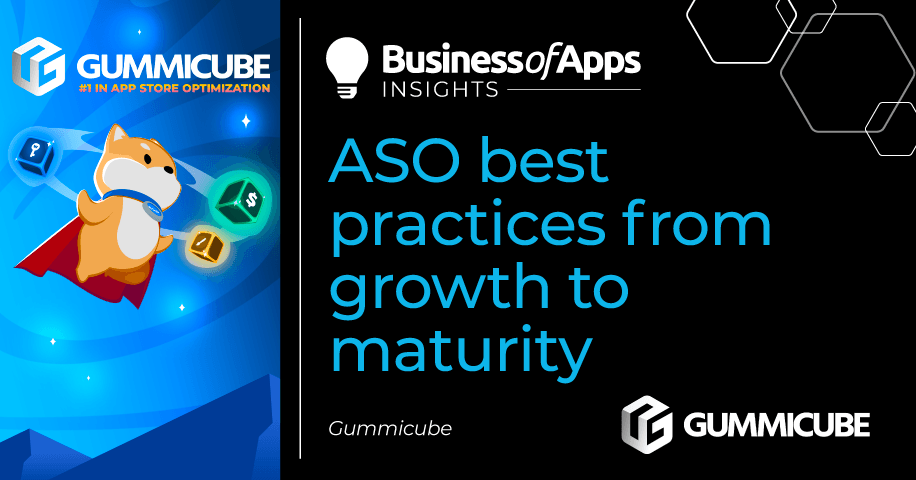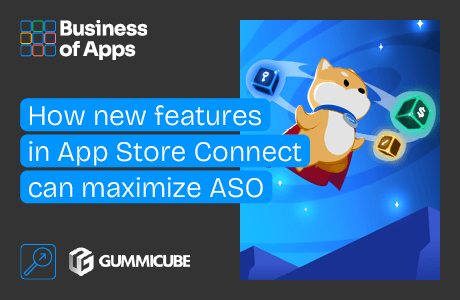To an App Store Optimization (ASO) novice, the extent of optimization often stops at the download. After all, once an app grows over time, then ASO has served its purpose, right? Not necessarily. In fact, user acquisition in the process of optimization is just scratching the surface. Once a user downloads an app, it’s imperative for every ASO expert, specialist, and developer to understand what it takes to turn just an acquired user into a valuable one.
How does ASO fit into this process, and how does it support app growth past pre-launch all the way to maturity? After all, it is called App Store Optimization, so what can it do for you off of the app stores? The simple answer is – a lot. To illustrate, let’s begin by understanding why ASO helps mobile marketers drive an already more valuable user base compared to other methods.
Why is App Store Optimization important for apps across all lifecycles?
Organic user acquisition drives more valuable users to your app. The “effort” in finding, downloading, and using the app requires more time. As a result, this action is more time-consuming and valuable once they find what they were looking for.
This is why supporting organic visibility through ASO is so vital. Users actively looking for something and eventually finding an app that suits their needs innately creates a more worthwhile connection from the start – leading them to be more likely to say.
At every point in an app lifecycle, each developer could attract new users. However, user acquisition goals should reach farther out and develop over time. Acquisition strategies for an app in the growth stage and maturity are quite different. In fact, applying the wrong strategy or using misguided metrics could be hindering growth.
How to optimize for the growth phase
After you’ve gone through all the hard work of optimizing for pre-launch, now it’s time to grow. Some of the most important principles of ASO marketing revolve around seasonal and iterative changes to help support growth. Contrary to popular belief, optimizing only a few times a year won’t really yield any significant results. Why is this?
The App Store and Google Play Store both stop crawling metadata just after 2-3 weeks. Reversely, user search behaviors can change drastically based on a multitude of factors. A high-volume keyword may be low volume the next or vice versa, so ensure your metadata and overall store listing is up to date.
Consider influences in the organizational app category in the following scenario:
An app named “Write Pal – Writing App” optimizes its metadata fields with keywords such as “writing”, and “documents” among others. They’re relevant, and they carry breadth outside of their immediate branding. Around back-to-school time, Write Pal decides to add the “back to school” keyword in their metadata after using ASO tools and technology to see that “Writing Buddy” saw success with that keyword last year. After two months of inclusion around back-to-school time, Write Pal saw similar effects and was even able to beat Writing Buddy for the keyword this year in app rankings. Naively, Write Pal decided to leave the keyword in for the months following – what happens in this scenario?
🎶 64% More Downloads With Music: New Data!
64% of users want premium soundtracks. Get exclusive access to the Feed.fm Influence of Music report and see how music drives engagement.
Get the ReportAfter the initial “high” of the “back-to-school” keyword, Write Pal falsely assumes that volume stays the same for the following months. In the background, Writing Buddy started marketing their new, Halloween-themed writing fonts. This scenario is common across all types of categories, even sometimes less overtly. High-volume keywords that seem evergreen can be old news the following week.
The key to growth in the growth stage relies on this principle. This also applies to creatives, which help developers and marketers drive downloads. Regularly A/B testing app screenshots and onboarding are key to driving consistent or improved conversion rates.
Growth in the maturity stage is attainable with App Store Optimization
Have you ever heard of optimizing action in ASO? Not very many online sources will tell you about the impacts of how an improved onboarding experience can help attract, engage and even retain users. This is the part of ASO nobody talks about.
When an app is in the maturity stages, developers must tread a delicate line of attracting new users while retaining their most valuable ones. One way a developer could do this is by creating an improved onboarding flow. Onboarding flows help reduce friction from download to actual usage. ASO is already highly adept at bringing you a more valuable user, so it’s even more important to support and sustain that value off the app store.
In addition to some of the most important ASO best practices, it’s vital for apps in the maturity stage to harness that balance of acquisition and retention. Through onboarding app split testing, developers are able to take advantage of the full scope of ASO.
Apart from in-app A/B testing onboarding flows, if you’re in the maturity stage, it’s vital to understand what external marketing sources can help you attract and retain users. At this point in growth, avoiding stagnation is one of your most crucial marketing actions.
Apart from Apple and Google’s store experience updates with In-App Events and LiveOps, ensuring your paid campaigns can simultaneously approach new users and re-engage existing ones can help balance that delicate line of retention and acquisition to usher the app back in growth or prolong the maturity stage,
Overall
The sooner you can optimize your app, the better prepared you’ll be along the app lifecycle. Prolonging the growth phase is one of the key ways you can grow beyond what can typically be expected. Seasonal and iterative ASO best practices are always recommended. For those in the maturity stage, it’s vital to take advantage of ASO best practices that can help on two fronts: retention and acquisition.












